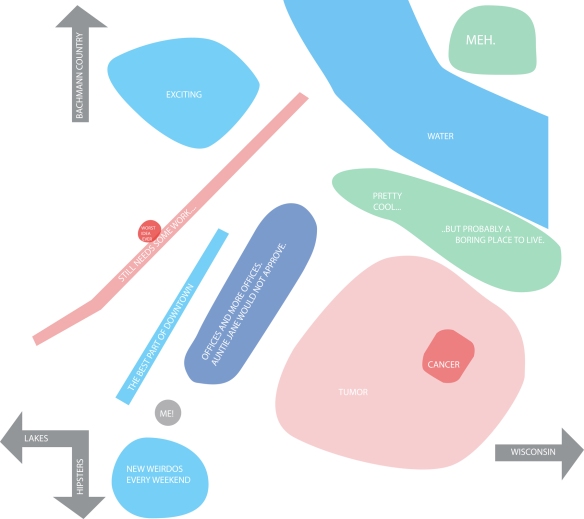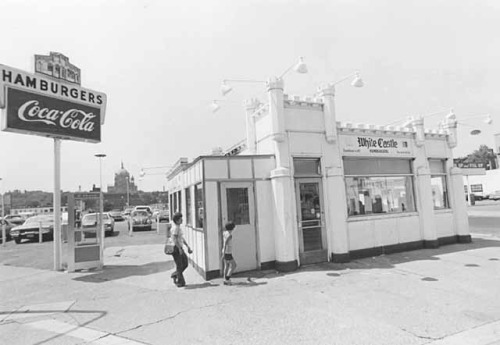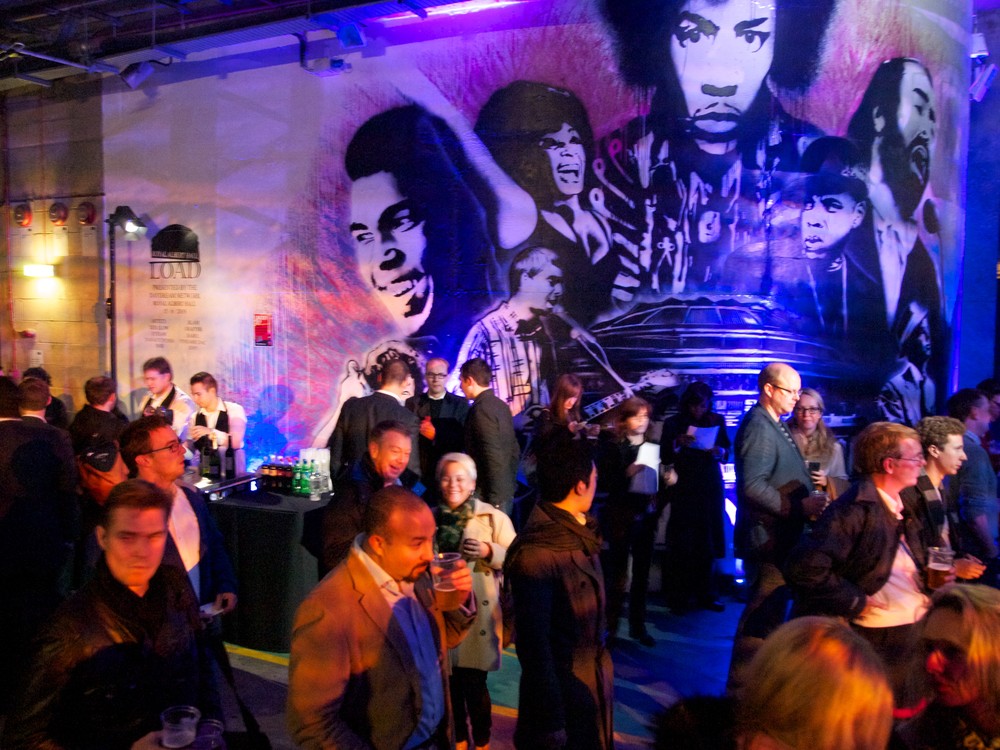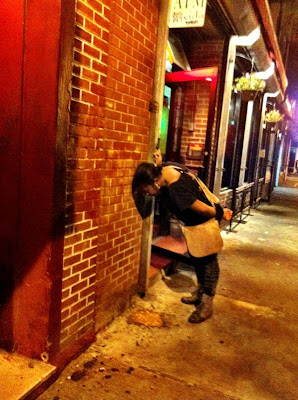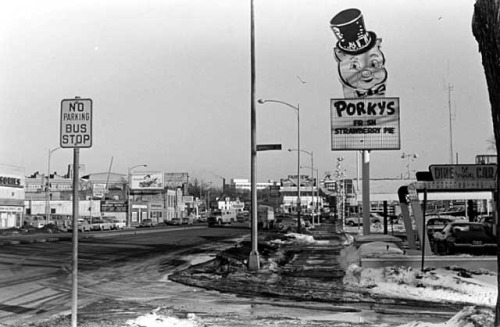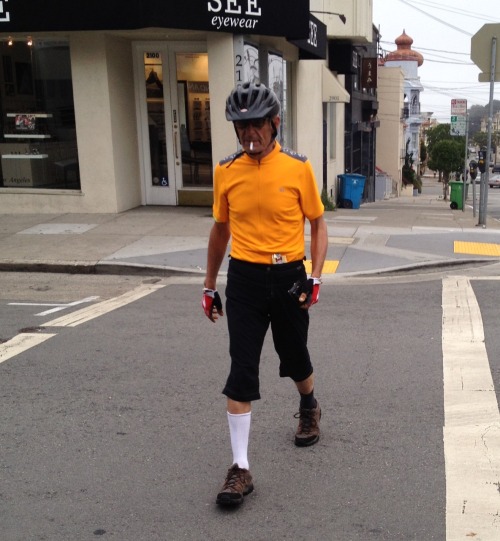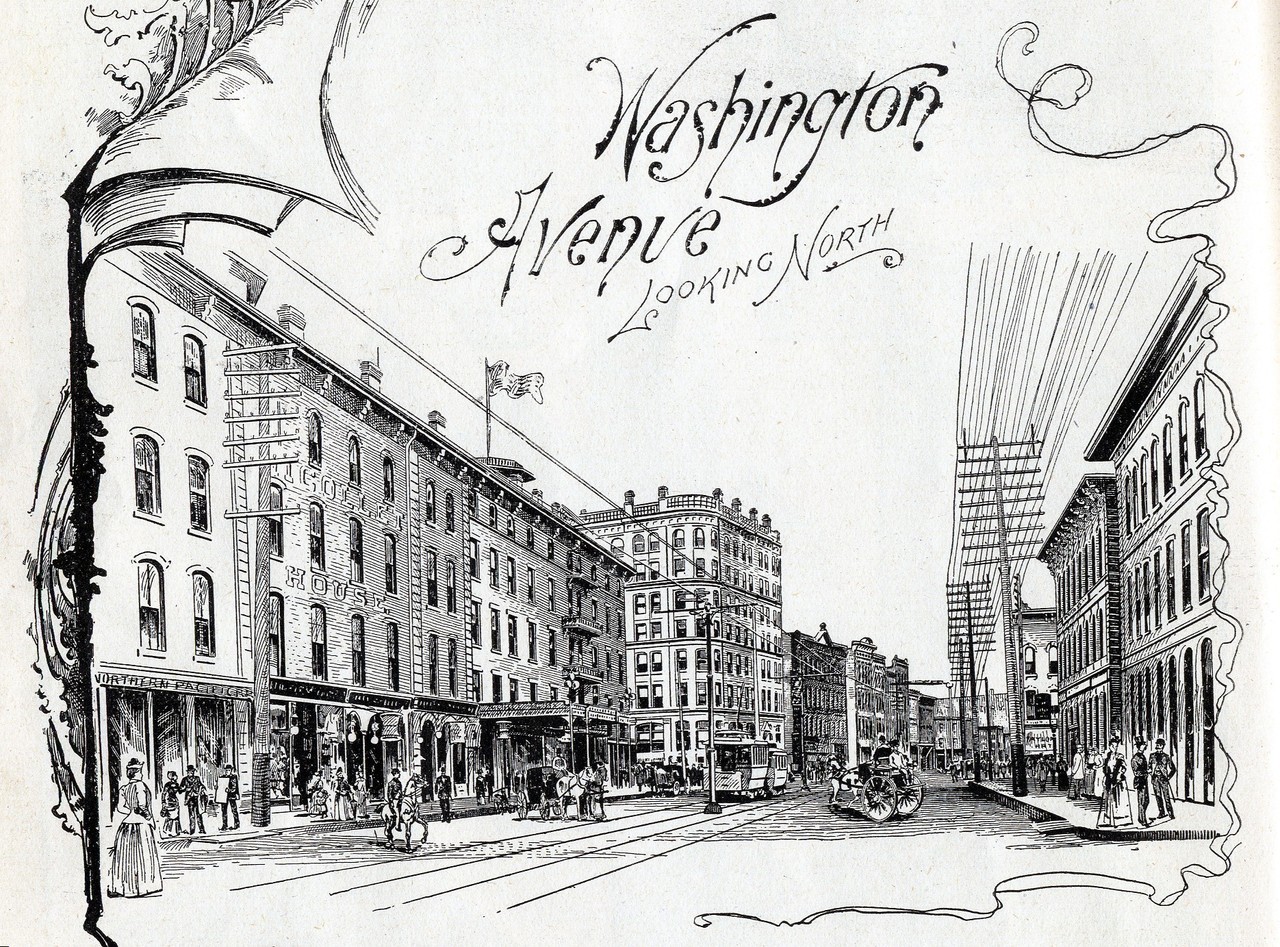 |
| [Trick or treating in St Paul, c. 1948.] |
My favorite stories involve the old streetcar. Kids would pelt it with snowballs in the winter. In the summer, they'd sneak up and scramble onto it and pull the electric arm off the catenary wires, pissing off everyone on board. Worst of all, the really bad kids would hide in the bushes and when nobody was looking, put grease on the tracks so that the streetcar couldn't brake going down the hill. (For the record, my uncle claims he was too good to ever do such a thing.) Occasionally they'd get caught, parents would be informed, and vague hell would break loose.
I'm sure you too have heard these stories of childhood from another era. It seems like another planet, kids (mostly boys) handed unfathomable freedom. This was the time when parents would say "go out and play in the street" unironically, when gangs of dirty boys would find ways of getting even dirtier, when boys were boys and men were men who didn't even pretend to talk to women or children.
Granted, it's all probably blown out of proportion, filtered through the distortions of nostalgia and forgetting, but these kinds of stories always made me jealous. When I was growing up, did I have the same kinds of adventure? Was I allowed to roam the city, to have streetcar explorations, to find and create unintentional parks? What kinds of urban exploration do kids uncover today, in our world of lawsuits and parental paranoia?
Looking back, I'd have to say that I did all right. I played in the forest, cut through the back yards, attended impossible capture the flag parties, and had a secret club in my tree house. And the biggest adventures for a 90s kid in the suburbs happened on Halloween. This was the best, the time when the young adventure overlapped with the adult world around us. This was the night when the world of play intersected with the surrounding grouchy universe, when doors were literally opened up before you and you uncovered the best surprises.
There was a certain point, some years after the great Halloween blizzard, when trick or treating reached its peak. In those autumns, my friends and I were were dedicated, questing for the best neighborhoods. We maximized our candy to effort ratio like venture capitalists, a cold accounting of candy bar size and trick or treat frequency and total distance. Our meccas were those neighborhoods with large McMansions filled with bored housewives, moneyed people too distracted to give Halloween due diligence. We figured out that these places, a bit off the beaten track, you might get full-size candy bars. We found one house where the parents had run out of candy and were giving out full cans of pop. We went back twice, switching parts of our costumes to confuse the gatekeepers.
Unlike other childhood adventures, Halloween was deeply urban. On this one night, we had permission to annoy and harass the people around us, the otherwise dark and empty homes. We wrangled whole streets filled with windows that, on any other night, flickered in unison to the dull glow of the television, breathing dead blue light. On Halloween they came to life. Porch lights were left on, and doorways were fair game. We'd push the evening as far as we could, our bags of candy filling far past any recommended daily allowance. We waded into previously uncharted suburbia, culs-de-sac far over our horizon. Few geographers have known the wonder of our Halloween explorations. The city was our territory. We were the great explorers.
These last few years, I've been spending Halloween at my father's house, in one of St Paul's oldest nicest neighborhoods by Summit Avenue. It's fun to hand out candy. It's a highlight of the year, a continual parade of kids going up and down the sidewalks, mounting old porches. In the course of the evening, you see lazy kids, neighbor kids, kids with way to much surgary energy, and lots of parents lurking in the background. It's hard not to enjoy dispensing crappy chocolate and good will from the comfort of the living room.
In St Paul, the Summit Avenue area attracts kids from all over the city. Parents and kids come from the poor neighborhoods on the other side of the freeway to wander the doorways of the fancy mansions. I suppose this happens in every city, families crossing the tracks and trekking to the grand hills to receive their allotted sugar handouts. This is the one night where neighborhoods drop their suspicions, where people of color feel slightly less unwelcome, where for one night the cities divisions scramble themselves and the boundaries of the city blur.
That seems to be what Halloween is really about. People in scary movies say that, on Halloween, the membrane between the living and the dead is thinner than ever. You could say the same thing about cities. Gates, glances, and doorways are more open on Halloween. The membrane of privacy that normally separates us thins and frays, and for one day people shed paranoia and welcome each other for a few meaningless seconds. Otherwise invisible parts of the city appear. People that wouldn't otherwise, cross paths.
It's not much. It's hardly important. It's just a piece of tiny shrink-wrapped mediocre chocolate from a rustbelt Pennsylvania factory. But the exchange happens thousands of times, over and again, in homes in every neighborhood in every city. I have it on good faith that 73% of total annual doorbell ringings occur tonight. More porches are stepped upon in a three-hour stretch of time than in all the rest of winter combined. Tonight you will see a thousand children, and somewhere in your backyard, a pack of boys is experiencing the kind of freedom found only in old men's tales. Enjoy the meaningless exchange, because this kind of offhand encounter is the stuff that cities are made of.





































